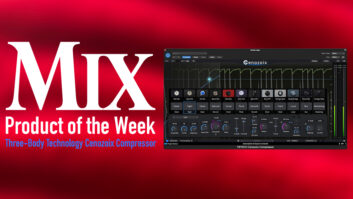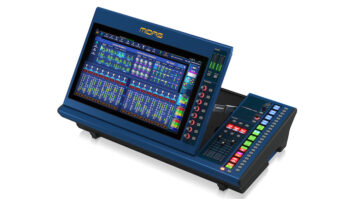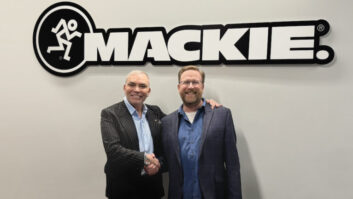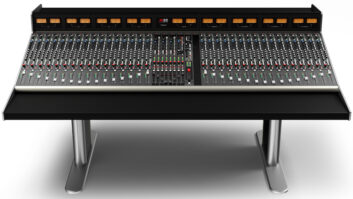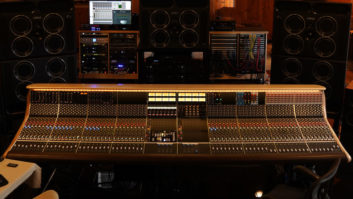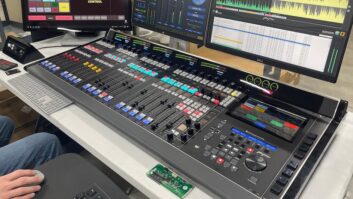
Set your time machine back to 1989, and you’ll enter a different world. It’s hard to believe, but just 15 years ago, everyday audio technologies and products like Pro Tools, ADATs and DA-88s simply didn’t exist. That year’s “affordable” digital 8-track was defined as Yamaha’s $30,000 DMR8; a Sony PCM-3348 48-track would set you back a cool quarter million and the first digital audio sequencers were still a year away. Even the Mac IIci — that year’s hottest computer — was priced at a hefty $6,700 for a then-blazing 25MHz 68030 processor with an 80MB hard drive and a whopping 4 megs of RAM.
The MIDI keyboard revolution was well underway and musicians everywhere were seeking a mixer that was affordable, solid and good-sounding. The outlook seemed bleak for anyone looking to make great music on a budget. Fortunately, help was on the horizon in the form of Tapco founder Greg Mackie, who, in 1989, launched a new company bearing his name and sold a couple hundred of its first LM-1602 line mixers. But it was Mackie’s CR-1604 compact 16-channel mixer unveiled about a year later that spawned a revolution of its own.
Besides offering rock-solid construction (frequently described as “built like a tank”), the CR-1604 ushered in some slick new concepts. Although a rackmount design, it could easily be used as a desktop mixer; its clever Rotopod chassis allowed connections to be accessed either from the front or the top of the unit. The CR-1604 also had a rugged internal power supply, a feature that’s almost unheard of in a market flooded with “budget” mixers equipped with flimsy wall wart supplies. But best of all, the CR-1604 did the impossible: It sounded great and carried a rock-bottom price that anyone could afford.
Soon, Mackie had sold tens of thousands of the mixers. The audience included not only struggling bands and musicians, but also working pros everywhere who used them as submixers in high-end studios, on top tours, during post-production for feature films and on live broadcast events such as the Olympics. The CR-1604 was unquestionably a hit, but Mackie didn’t stop there. Several years later, the original CR-1604 was replaced by the VLZ and current VLZ Pro Series, which featured expanded EQ capabilities and XDR™ (Extended Dynamic Range) premium, studio-grade mic preamps. Retaining the pro build quality while expanding the capabilities of the classic CR-1604, it’s no surprise that its predecessors have encountered such worldwide success.
At last month’s NAMM show in Anaheim, Calif., Mackie unveiled the next generation in its legacy of compact mixers. Known as “Onyx” (the name is taken from a reference to the Onyx XDR low-noise, all-discrete mic preamps used in other Mackie pro mixers), the series includes three models, all with new equalizers by noted designer Cal Perkins.
The top-of-the-line Onyx 1640 is a 4-bus, 16-channel (16 mono mic/line inputs) mixer with a 4-band (two sweepable mids) equalizer and the popular Rotopod chassis for flexible cable interfacing. The other two Onyx models are both 2-bus designs. The 16-channel (eight mic/line and four stereo line inputs) Onyx 1620 shares the same EQ as the Onyx 1640, while the compact 12-channel (four mic/line and eight line inputs) Onyx 1220 has a 3-band EQ with a sweepable midband. All have individually switchable 48VDC phantom powering as standard.
With just the new EQ, the Onyx line would be an impressive upgrade, but the mixers go much further. Each channel has a 4-segment LED input meter for more flexibility than a simple clip light, especially useful when optimizing the gain trims on highly dynamic sources. The talkback section operates with either an external mic (via a rear panel XLR input) or the condenser mic element built into the top panel. The first two channels of each mixer can be switched to handle a hi-Z direct instrument input, offering precise impedance matching for connecting electric guitars, basses, etc., without needing an outboard direct box. Speaking of direct connections, the rear panel has balanced +4dB analog direct outputs for every mixer channel on D25-sub connectors using the industry-standard Tascam DA-88 pinout, so users can use off-the-shelf XLR or ¼-inch TRS snakes for fast interfacing to pro recorders or workstations.
Perhaps the most exciting and useful new function in the Onyx line is an option for a 24-bit/96kHz FireWire (IEEE 1394) interface, which plugs into a rear panel card slot. The option allows streaming of up to 18 channels of multitrack audio to a computer and simultaneously returns two channels (the L/R mix) back to the console for monitoring through the control room/phones/talkback matrix, creating an effective front end for any DAW. In remote recording applications, the FireWire option offers a powerful multitrack interface for live recording. In the most basic application, a band could simply add an Onyx mixer, a FireWire cable, recording software and a laptop computer and create fast, quality portable recordings — anywhere. In a more complex arrangement, the Onyx could be used as a bank of high-end preamps, feeding a house rig via the D25-sub direct outs, monitors via the subgroup outs and the FireWire routing to a DAW. The possibilities are nearly endless.
Fifteen years after the company’s founding, Mackie is set to spark another recording revolution with the introduction of the Onyx line. “Like the original CR-1604, the Onyx mixers continue Mackie’s tradition of bringing high-end performance within the reach of working professionals,” says Mackie senior VP of marketing and product development Ken Berger. “We can’t think of a more appropriate way to celebrate 15 years of Mackie innovation than to redefine the category that we created.”
For more information, visit www.mackie.com.
George Petersen is Mix‘s editorial director.

